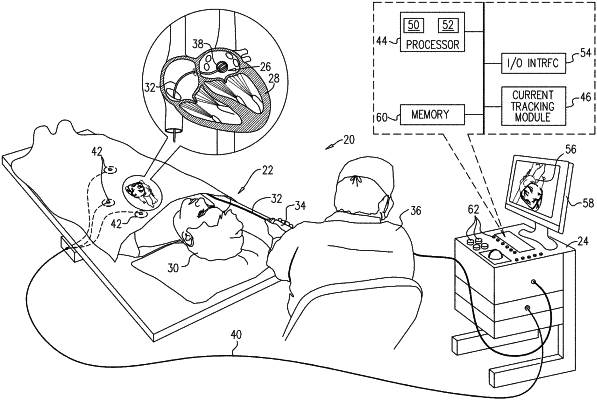| CPC A61B 5/066 (2013.01) [A61B 5/287 (2021.01); A61B 5/343 (2021.01); A61B 5/349 (2021.01); A61B 5/367 (2021.01); A61B 5/6853 (2013.01); A61B 5/6858 (2013.01)] | 23 Claims |

|
1. A method, comprising:
(a) receiving, from an intracardiac catheter, having a distal end comprising a plurality of electrodes, within a heart of a subject, first signals from at least three of the electrodes responsive to electrical activity in myocardial tissue with which the at least three of the electrodes are in contact;
(b) receiving, from at least one of the intracardiac catheter or at least one body surface electrode applied to a body surface of the subject, second signals that are indicative of respective location coordinates of the at least three electrodes within the heart;
(c) processing the second signals so as to compute the respective location coordinates of the at least three electrodes and to determine a geometric center of the respective location coordinates;
(d) generating, based on the first signals and the second signals, an electroanatomical map for an area of the myocardial tissue comprising the determined geometric center;
(e) determining, in the map, a focus of an arrhythmia in the area of the myocardial tissue;
(f) presenting, on a display, a circle; and
(g) presenting, within the circle, a region of the map comprising the geometric center and the focus of the arrhythmia so that the geometric center on the map aligns with a center of the circle, the region of the map presented within the circle indicating a spatial relationship between the geometric center and the focus of the arrhythmia.
|